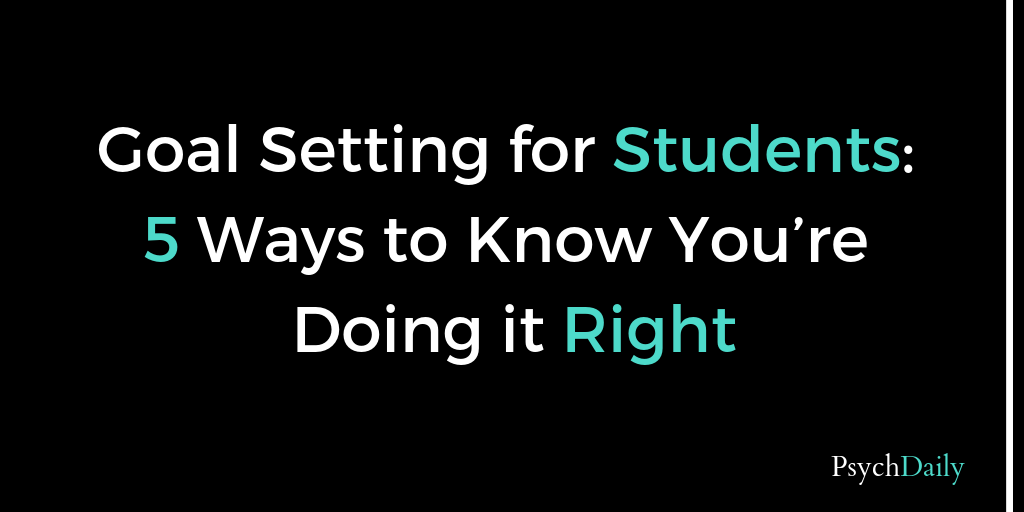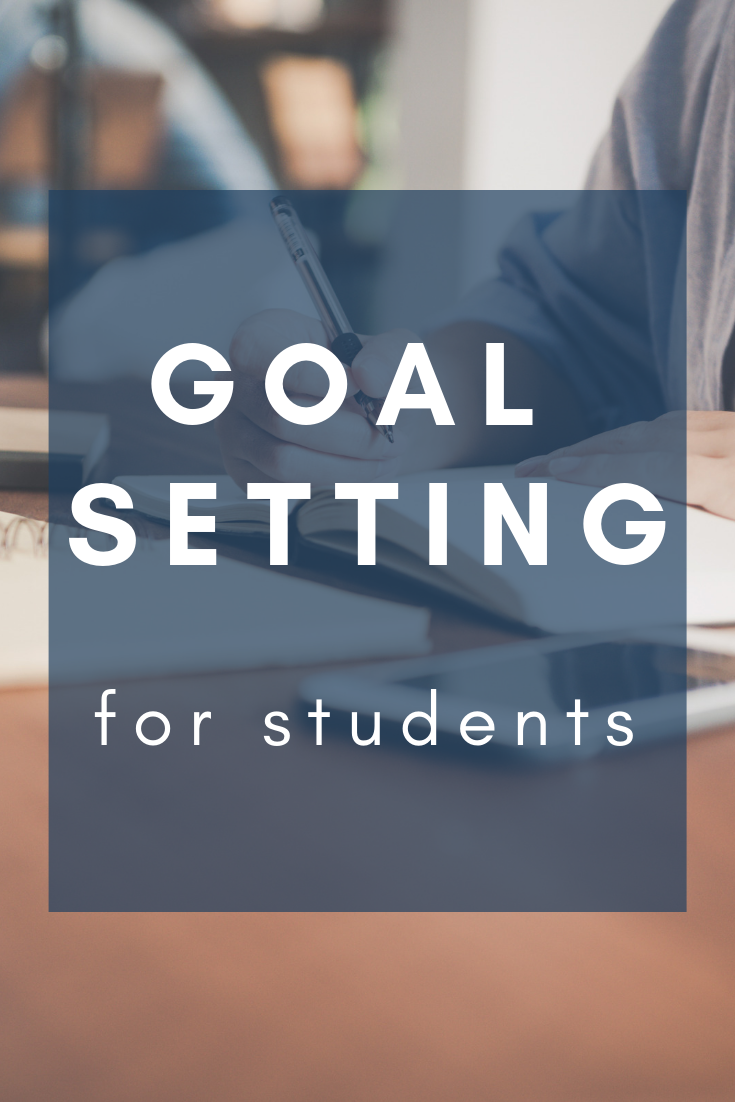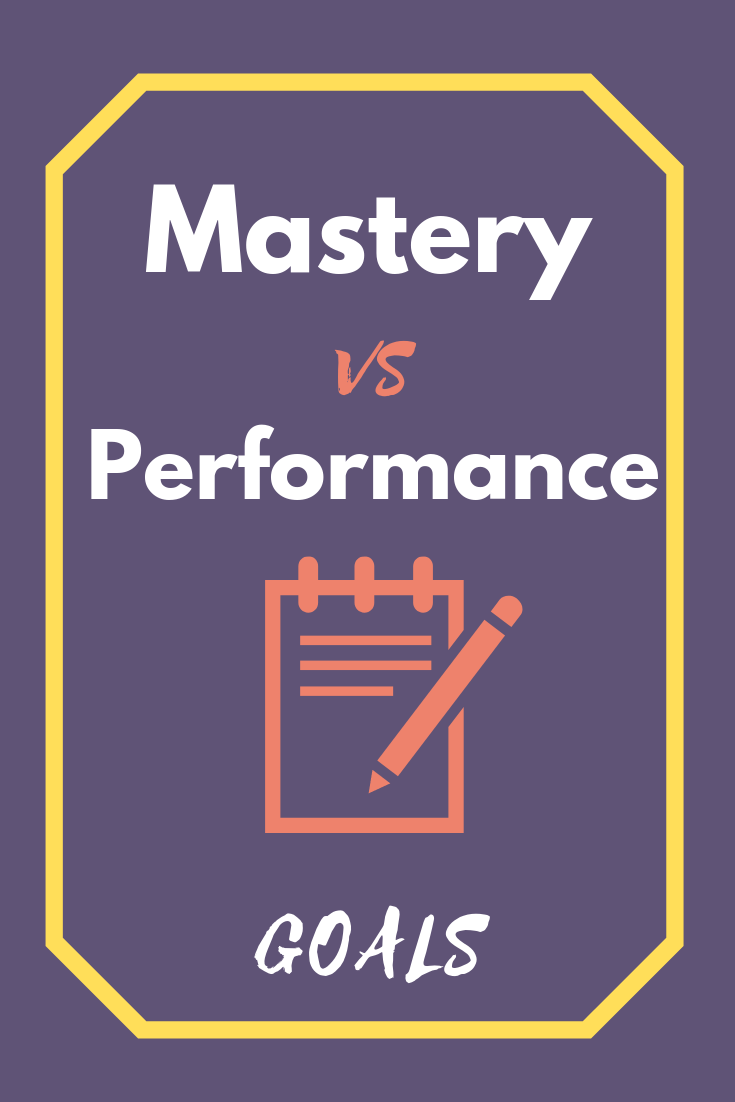Goal Setting for Students: 5 Ways to Know You’re Doing it Right

In high school, I took a weight-training class to fulfill a needed gym credit. My goal was to do the bare minimum to get an A, and I did just that. Looking back, I realize my goal of getting an A was good, but had my goal been to improve my fitness, I would have approached the course differently.
For the busy teacher, goal-setting is everything. Not only does it help with the day-to-day craze of work and a million other things to do, but it can also be a great tool for our students to help them accomplish more. The types of goals we set matters.
There are two types of goals we can make: mastery goals and performance goals. Mastery goals focus on increasing competence, whereas performance goals focus on demonstrating skill and ability. In the case of my gym class, I had a performance goal of getting an A, rather than a mastery goal of improving my fitness. Here are 5 ways to check that your goals are mastery.
1. Actively Seek Feedback
When I took the weights class, I felt that the teacher giving me correction was a sign I was incompetent, and I worried that it would bring down my grade. Had I been focused on improving my fitness, I would have welcomed his advice on how to improve my strength-training exercises.
What it looks like for you:
When a boss or peer corrects, see it as an opportunity to improve, rather than a reflection of your abilities.
If you get stumped on a problem, seek others for help rather than avoid it in fear of looking inadequate. The more you fear looking incompetent, the less opportunities you have to gain competence. What it looks like for your student:
When you correct your student, be warm and encouraging. Let him know you are trying to help him improve, not shame or condemn him.
Encourage your student to ask questions if he is confused. Help him view you and his other teachers as mentors who are there to help him learn, not to judge or punish him.
2. Use Self-Comparison to Gage Success
In my gym class, I was more concerned about looking like I knew what I was doing than actually knowing what I was doing. When we compare ourselves to others who are much more advanced than us, it can be discouraging. This can lead us to believe that we don’t have what it takes or we don’t have the right genes. If the goal is to be more advanced than others, once the goal is met, there is nothing pushing you to become better.
What it looks like in you:
As you work on a new goal, whether it be having healthier meals, greater confidence at work, or a clean house, focus on where you stand in relation to the past. If you are consistently looking to the Super Teacher next door who can do it all, your goal may seem further and further out of reach.
Be sure to acknowledge areas where you have grown and improved. What it looks like for your student:
Rather than praising your student for getting the top score in their class, congratulate her on how hard she worked and the progress she made. It may sound something like, “Wow! On Monday you couldn’t spell any of these words and now you can spell all 10! It looks like that studying really paid off.”
Be sure not to compare students against each other but focus on their individual strengths and progress.
3. Interpret Setbacks and Failures as Learning tools on How to Improve
It’s fun to practice the piano song we know well or write in the computer programming language we always use but staying in our comfort zone doesn’t lead to progress. How often has the fear of failure kept you from trying something new? Failure is simply feedback on what to do differently next time, not an indication to drop the goal altogether.
What it looks like in you:
Recognize where the fear of failure is holding you back. Perhaps you are afraid of asking your boss for a raise, applying for a new position, trying out a new idea you’ve been too afraid to share, or even quitting your job to start your own company.
Pay close attention to when your inner voice says that you can’t do it and question that voice.
Try to make small steps outside of your comfort zone and revaluate your progress.
What it looks like for your student:
When your student has setbacks, be sure you encourage him with growth-mindset phrases, which focus on intelligence being incremental. For example, “It looks like your approach this time didn’t work. What do you think you can change next time?” This is in contrast with fixed-mindset phrases such as, “It looks like this isn’t your subject,” or “You must not have gotten the math gene.” Having a fixed mindset means that no matter the amount of effort given, he cannot succeed in that area.
Let him know that mistakes are ok. If he answered a question wrong in class, praise him for having the courage to try.
Recognize effort more than results.
4. Develop an Intrinsic Motivation
We work harder on things we are interested in than on things we aren’t or on things we feel forced into.
What it looks like in you:
Find something you have a true passion for. If waking up each day for work fills you with dread, it’s a sign that you have not yet found your calling in life.
I understand that there are clear times when it is important to do things you don’t want to do. Work on tasks that allow you to have some autonomy and choice. You will care more about personalized projects over ones that give little room for your own ideas.
What it looks like for your students:
Allow your students to pursue their own interests. If the activity or goal is self-directed, she will be much more motivated to grow in that area.
There will be times when students need to be directed away from the activity he or she chooses. For example, my little girl can watch hours and hours of mindless YouTube videos. When this is the case, give your student options on what is acceptable. Every time your student has a voice and can choose her behavior, she will feel more empowered.




5. Accept New Challenges That Stretch You
When you go to the doctor, do you want her to have selected the easiest medical school or the one that really stretched her abilities? I’m assuming the latter. What it looks like in you: - Each day focus on one thing you can do to stretch yourself. Perhaps it’s trying a new recipe, accepting an intimidating work assignment, or designing a graphic in a program you’ve resisted learning. What it looks like for your students: - Encourage an “I can do it” attitude in your students. If a student says a task such as learning to divide is too hard, remind him how he also once felt that multiplication was too hard, but he persevered and mastered his times tables. - Help them break daunting tasks such as final projects into smaller chunks.
It’s common for children to have performance goals such as 20 minutes of piano practice, all As on their transcript, and reading one chapter a night of a religious text, but these are not ultimately what make a professional pianist, a world-renowned brain surgeon, or a wise religious leader. Mastery goals can help teachers and students become something beyond a checklist-fanatic. They give your life a greater sense of meaning and purpose more so than surface-level goals. Forget being a Super Teacher, be a Mastery Teacher.



